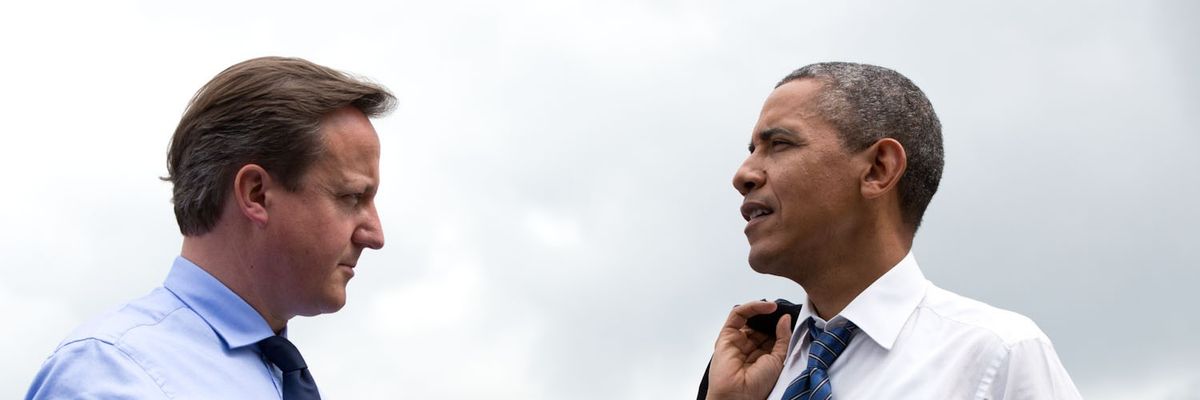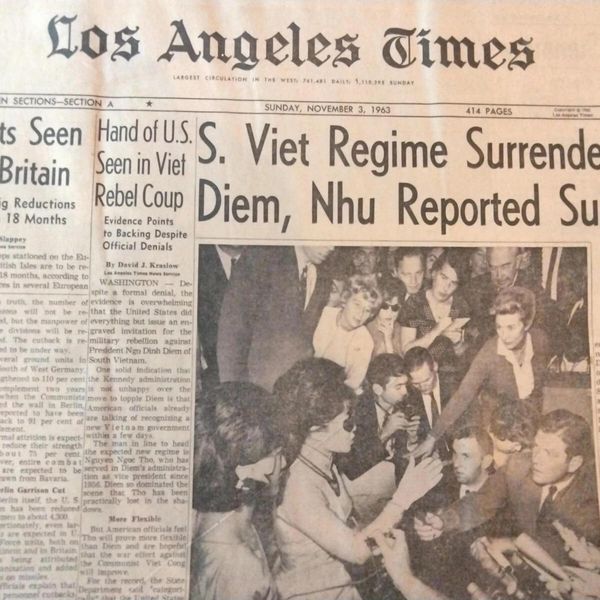Ten years ago, the U.S. and Britain were roiled by the debate over how to respond to the Syrian government’s use of chemical weapons in that country’s civil war.
President Barack Obama had threatened the previous year that the use of such weapons would cross a “red line” for his administration, and when the attack occurred Obama moved to follow through on his ill-advised threat. It seemed as if there might be a repeat of the 2011 Libyan intervention when the U.S. joined Britain and France in an initially limited mission that then expanded into a war of regime change.
At the very least, Obama was preparing to use force against another state when neither U.S. nor allied security required it.
Then a remarkable thing happened: the elected representatives in both Britain and the United States got to have their say and refused to go along with the intervention. First, the House of Commons voted down the government’s motion authorizing military action, and because of that result, Obama felt compelled to go to Congress to try to get an approval that was not forthcoming.
In the end, the Cameron and Obama governments were unable to proceed with the bombing campaign that they had been on the verge of starting just a few weeks before, and without U.S. and U.K. involvement France stood down. Instead of the “unbelievably small” action that then-Secretary of State Kerry promised, the U.S. and Russia came up with a much-maligned diplomatic solution that successfully removed most of Syria’s chemical weapons stockpiles.
For a few weeks in late August and early September 2013, there was robust debate about military action before it started, and that debate worked to slow down and then stop the rush to use force. For the first time in decades, the interventionists lost. It showed what could happen when Congress’s role in matters of war was respected, and it stopped the U.S. from initiating hostilities against a country that had not attacked us and didn’t threaten us.
There was a moment when it seemed as if U.S. foreign policy might become at least slightly saner and more restrained than it had been since the start of the century, but this turned out to be a false dawn.
Unfortunately, Obama learned his lesson from the Syria episode, and the lesson he learned was that he would never again seek Congress’s approval for military action or involvement anywhere else. Just a year after he asked Congress to pass a resolution authorizing the use of force in Syria, he ordered unauthorized military action in Iraq and then in Syria, this time against the forces of the Islamic State.
That intervention was broadly popular and uncontroversial in Washington, and hardly anyone blinked at the start of another illegal war. Nine years later, U.S. forces are still in Syria without authorization, and most members of Congress can’t be bothered to pay attention to them, much less demand that they be withdrawn.
In the years since the first “red line” debate, the U.S. also launched attacks on the Syrian government during the Trump administration, which achieved nothing but making a mockery of the Constitution and international law. Trump’s decisions to use force against the Syrian government in 2017 and 2018 also show how ineffective military action in 2013 would have been. Other than inspiring embarrassing praise from television pundits, Trump’s illegal uses of force against Syria were useless and quickly forgotten.
One of the things that received little attention during the original debate over bombing Syria in 2013 was that it would have been illegal in the absence of U.N. authorization. The U.S. and its allies would not have been defending themselves by striking Syrian government forces. To uphold an international “norm,” the U.S. and its allies were claiming the right to trample on one of the most important prohibitions in international law. As far as supporters of intervention were concerned, it was more important to preserve so-called U.S. credibility than it was to respect the U.N. Charter.
The “red line” debate was useful in showing how the defenders of the “rules-based order” despise international law when it gets in their way.
A large part of the case for intervention involved fixating on the importance of military action to maintain U.S. credibility in the eyes of adversaries and allies alike. According to this blinkered view, if the U.S. didn’t make good on its threat to strike the Syrian government it would discourage allies and partners and cause adversaries to become more aggressive.
It didn’t matter that this was a false and easily refuted understanding of how credibility works. Adversaries judge the credibility of threats and promises by assessing the interests that the U.S. has at stake and the capabilities that it can bring to bear in defense of those interests, and not by whether the U.S. always resorts to force to back up threats. No one can seriously believe that the reliability of U.S. treaty commitments hinges on bombing an unrelated country half a world away, but this is what credibility hawks want and need us to believe.
The advantage of the hawkish credibility argument is that it distracts attention from the fact that the U.S. has no vital interests at stake in the place in question. Interventionists appeal to credibility when they know that the case for military action is especially weak on the merits, so they seek to turn it into a debate over the U.S. role in the world. They like to use the appeal to credibility as an all-purpose license to kill.
In 2013, it didn’t work. The public and Congress weren’t fooled into supporting unnecessary military action. Having received an emphatic no as the answer from the American people, interventionists have learned not to ask permission beforehand.
The credibility argument didn’t make sense 10 years ago, and it hasn’t improved with time. Despite some strained, desperate claims that the 2014 Russian invasion of Ukraine was somehow a result of the lack of U.S. military action in a different part of the world, nothing happened in the years following the 2013 debate that supports the claims of credibility hawks.
The U.S. chose not to launch some airstrikes on Syria, and it didn’t lead to any of the disastrous scenarios that hawks conjured up. No allies lost faith in U.S. promises, and no adversaries discounted the U.S. willingness to honor its real commitments. With the benefit of hindsight, we can see just how wrong credibility hawks were 10 years ago.
We should remember that the next time that they insist that our government has to kill some random people to keep up America’s reputation for using force.
















